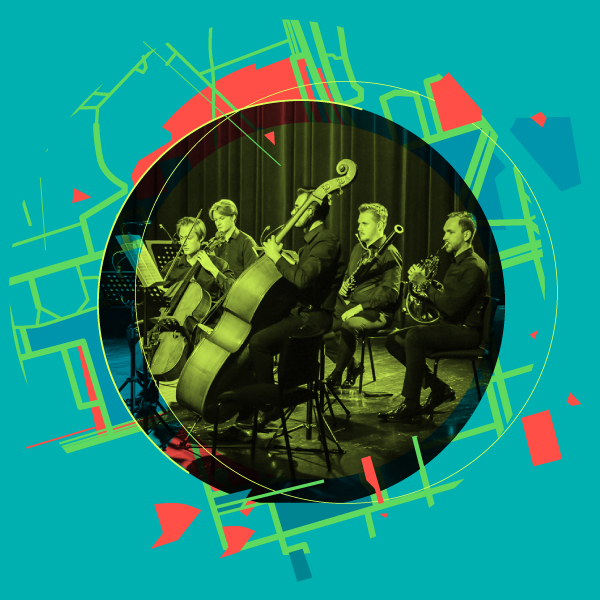

Julita Burzyńska (ASV), Zofia Piasecka (ASV) flutes
Radosław Soroka, Krzysztof Galbarczyk (ASV), Jan Tomaszuk (ASV) clarinets
Paweł Dąbrowski (ASV) bassoon
Krzysztof Stencel, Szymon Woźniak horns
Amelia Kowalewska (ASV) trumpet
Julia Fejdasz (ASV) violin
Tomasz Rosiński viola
Mateusz Błaszczak cello
Tomasz Szymański (ASV) double bass
Adam Siebers violin, music direction
Malina Sarnowska host
Giuseppe Tartini Concerto in D major for trumpet and strings (arr. Concerto in E major for violin and strings DouT 53) [10′]
I. Allegro
II. Andante
III. Allegro grazioso
Johannes Brahms Serenade No. 1 in D major, Op. 11 (selection; reconstruction of the original version for nonet: flute, two clarinets, bassoon, horn, violin, viola, cello, double bass) [25′]
I. Allegro molto
IV. Menuetto I & II
V. Scherzo: Allegro – Trio
VI. Rondo: Allegro
intermission
Ludwig van Beethoven Symphony No. 3 in – flat major, Op. 55 Eroica (selection; arr. Carl Friedrich Ebers for nonet: two violins, viola, flute, two clarinets, two horns and double bass) [25′]
I. Allegro con brio
II. Finale: Allegro molto
After last year’s highly successful final concert of the Sinfonia Varsovia Academy with chamber arrangements of Beethoven’s symphonies, students of this year’s 12th edition of the project continue this Beethovenian series. How does the legendary Symphony No. 3 in E-flat major, Eroica, sound in a version for 10 instruments? The composer himself was convinced that satisfyingly. He himself developed and allowed others to develop his symphonies for smaller ensembles. The two outermost movements of Eroica, arranged by Carl Friedrich Ebers in 1818, will be performed in the second part of the evening, while in the first we will hear extensive excerpts from Johannes Brahms’s Serenade No. 1 in D Major, Op. 11. The composer – enamored of the models of Haydn and Beethoven – first created a version for nine instruments, and later transcribed the work for a symphony orchestra and made his debut as a young conductor. The serenade was a great success at the time. Undeservedly overlooked in concert programs today, it is proof of the young Brahms’s high skills and, above all, music that gives great pleasure to listeners. The young performers’ concert will open with a Baroque rarity: the Concerto for solo trumpet and strings by Giuseppe Tartini, another example of an interesting adaptation – this time from a violin original.